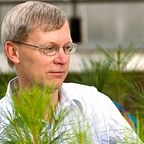# Unveiling the Mystery: Why Is Your Arborvitae Turning Brown?
Introduction:
You stroll into your garden, expecting a vibrant display of green from your arborvitae turning brown, but instead, you’re met with the disheartening sight of brown foliage. Panic sets in — what’s happening to your beloved arborvitae? In this comprehensive guide, we’ll unravel the reasons behind arborvitae turning brown and provide actionable solutions to restore its lush green glory.
## Understanding Arborvitae
Before delving into the causes of browning, let’s acquaint ourselves with the arborvitae. These evergreen conifers, belonging to the cypress family, are prized for their lush, feathery foliage and elegant, tapered shape. They serve as fantastic privacy screens and ornamental additions to gardens, making their well-being crucial for an aesthetically pleasing landscape.
## **1. Environmental Stress Factors**
Arborvitae, like any other plant, reacts to changes in its environment. **Excessive heat or drought conditions** can trigger stress, causing the needles to turn brown. Ensure your arborvitae receives sufficient water, especially during dry spells, and consider providing shade during scorching summers.
## **2. Improper Watering Practices**
Overwatering or underwatering can both lead to browning. Striking the right balance is key. Regularly check the soil moisture — it should be consistently damp but not waterlogged. **Deep watering** is preferable, allowing the roots to absorb moisture effectively.
## **3. Pests and Diseases**
Pests like spider mites or diseases such as **canker and root rot** can compromise the health of your arborvitae, resulting in browning. Inspect your plant regularly for any signs of infestation or infection. Early detection is crucial for effective intervention.
## **4. Nutrient Deficiency**
Arborvitae requires specific nutrients for optimal growth. A lack of essential nutrients, particularly nitrogen, can lead to browning. Consider **fertilizing your arborvitae** with a balanced, slow-release fertilizer to address potential deficiencies.
## **5. Inadequate Sunlight**
While arborvitae generally thrives in full sun, inadequate sunlight can cause browning. Ensure your plant receives at least **six hours of direct sunlight** daily. Trim surrounding vegetation if necessary to allow ample sunlight penetration.
## **6. Improper Pruning Techniques**
Pruning is a necessary aspect of arborvitae care, but improper techniques can result in browning. Avoid excessive pruning, especially during the growing season. Opt for **pruning shears sanitized** to prevent the spread of diseases.
## **7. Transplant Shock**
If you recently transplanted your arborvitae, it may experience transplant shock, leading to browning. Be patient, as this is a temporary setback. Ensure the plant receives adequate water and nutrients during this critical phase.
## **8. Winter Burn**
Arborvitae is susceptible to winter burn, especially in colder climates. Shield your plant from harsh winter winds and consider using **anti-desiccant sprays** to protect against moisture loss during winter.
## **9. Soil pH Imbalance**
Arborvitae prefers slightly acidic to neutral soil. Test the soil pH and amend it if necessary. **Adding organic matter** can help balance the pH, promoting a healthier environment for your plant.
## **10. Choosing the Right Variety**
Not all arborvitae varieties are created equal. Some are more resilient to specific conditions. Ensure you choose a variety suited to your local climate and soil conditions to minimize the risk of browning.
## Conclusion
In the intricate world of arborvitae care, the key to preventing browning lies in a holistic approach. Regular monitoring, proper watering, and addressing issues promptly are paramount. By understanding and implementing these solutions, you’re not only saving your arborvitae but also ensuring a vibrant, green focal point in your garden. Remember, a little TLC goes a long way in maintaining the beauty of your arborvitae landscape.
